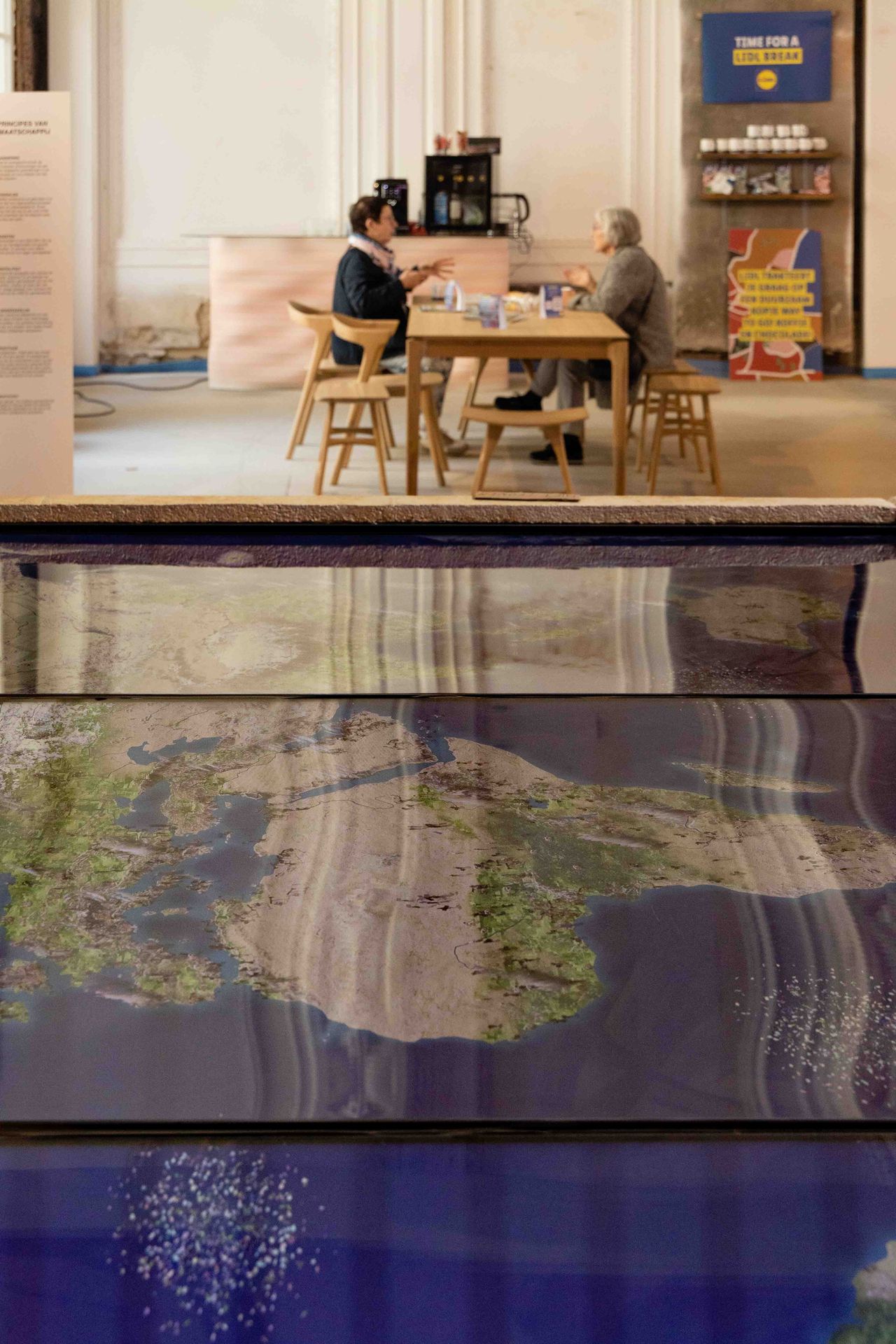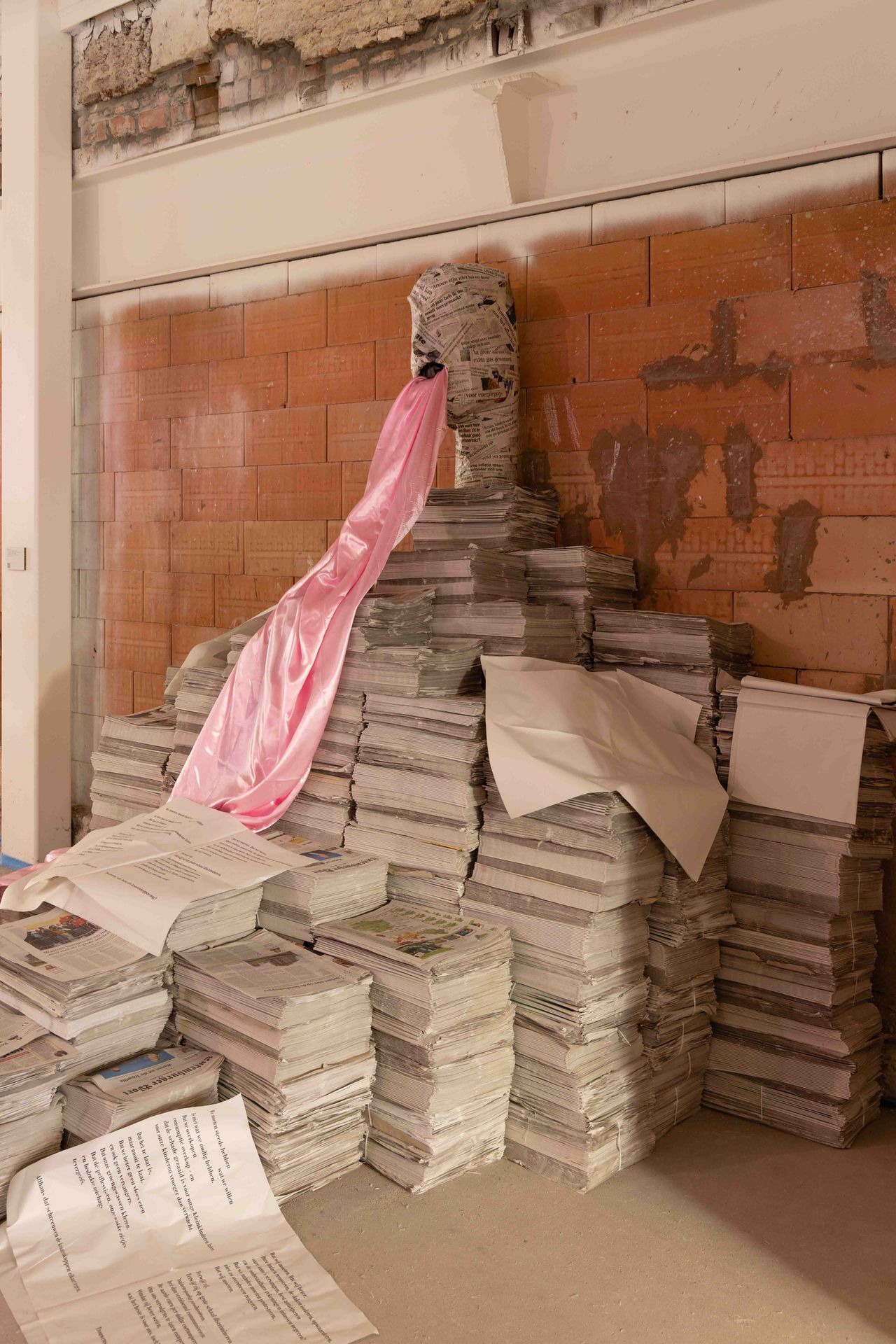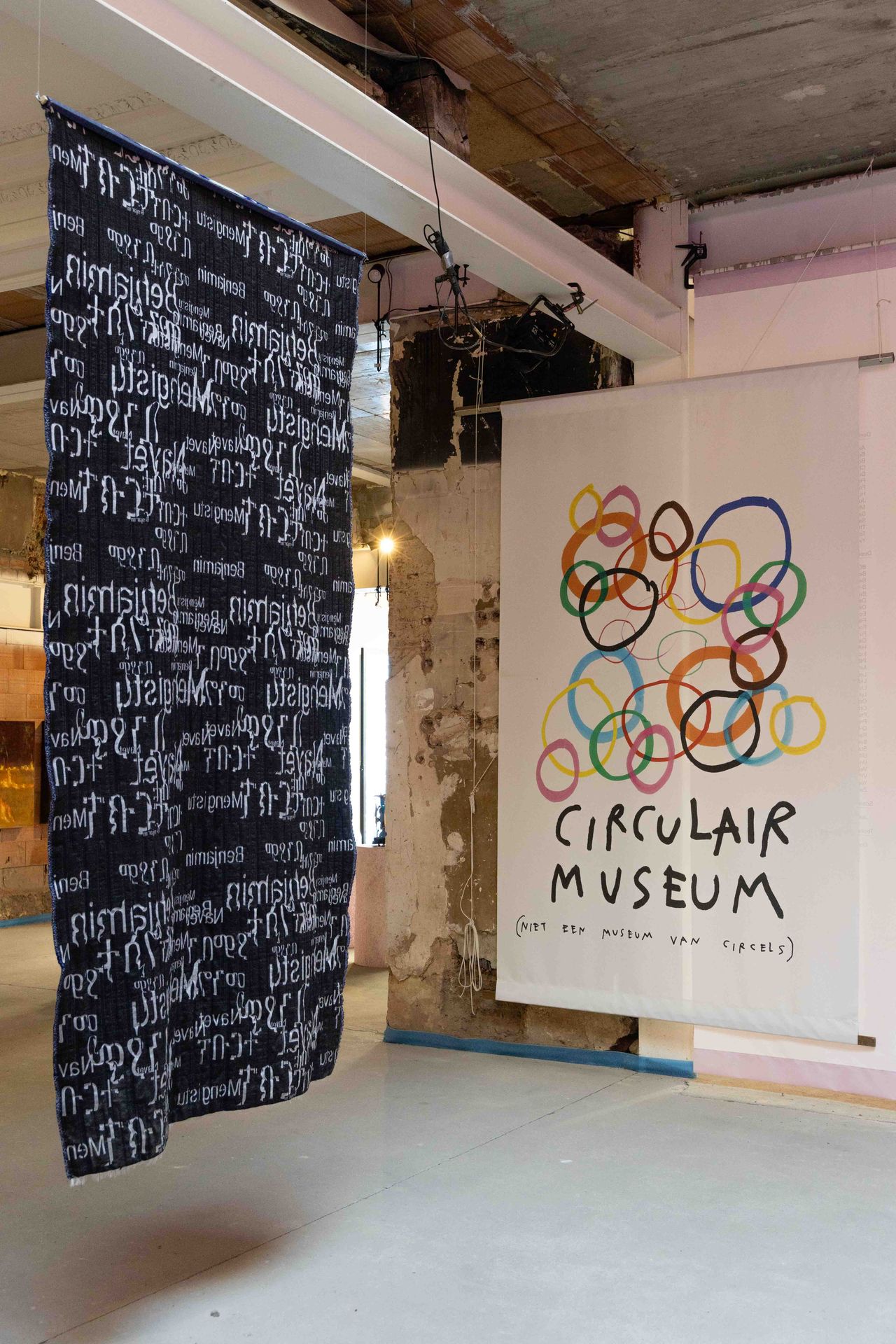Museum of Circular Economy
Blowing the creative whistle on climate change, Nina Maat, founder of Antwerp Circular, not only addresses
the problem but wants to serve the solution 'by showing the fun and easy side of sustainability.'
MUCE is the first pop-up museum of the circular economy, and with this initiative Maat wants to create greater
awareness. Circularity is one of the best solutions for environmental and climate issues,. By educating the public
on the circular economy, we can all be part of the solution.
A young, ambitious woman
Maat is 26 years old and has always been concerned about environmental and climate crises. As a new graduate of political and environmental sciences, Maat interned with various government agencies and non-profit organisations.
Her fascination ignited after reading an article on the circular economy in 2014. This onset Maat's big 'eureka' moment. Knowing she would never become a scientist, she still wanted to raise awareness of the circular economy in an accessible way.
By the name of 'Antwerp Circular', Maat takes several initiatives, such as creating her own collection of coffee cups made from coffee grounds, and clothing swapping events or engaging with policymakers to seek efficient climate-change solutions. After organising events in a variety of museums, she decided it was time for her own museum, dedicated to circularity. "After all there is so much to see and show about circular economy", Maat said.
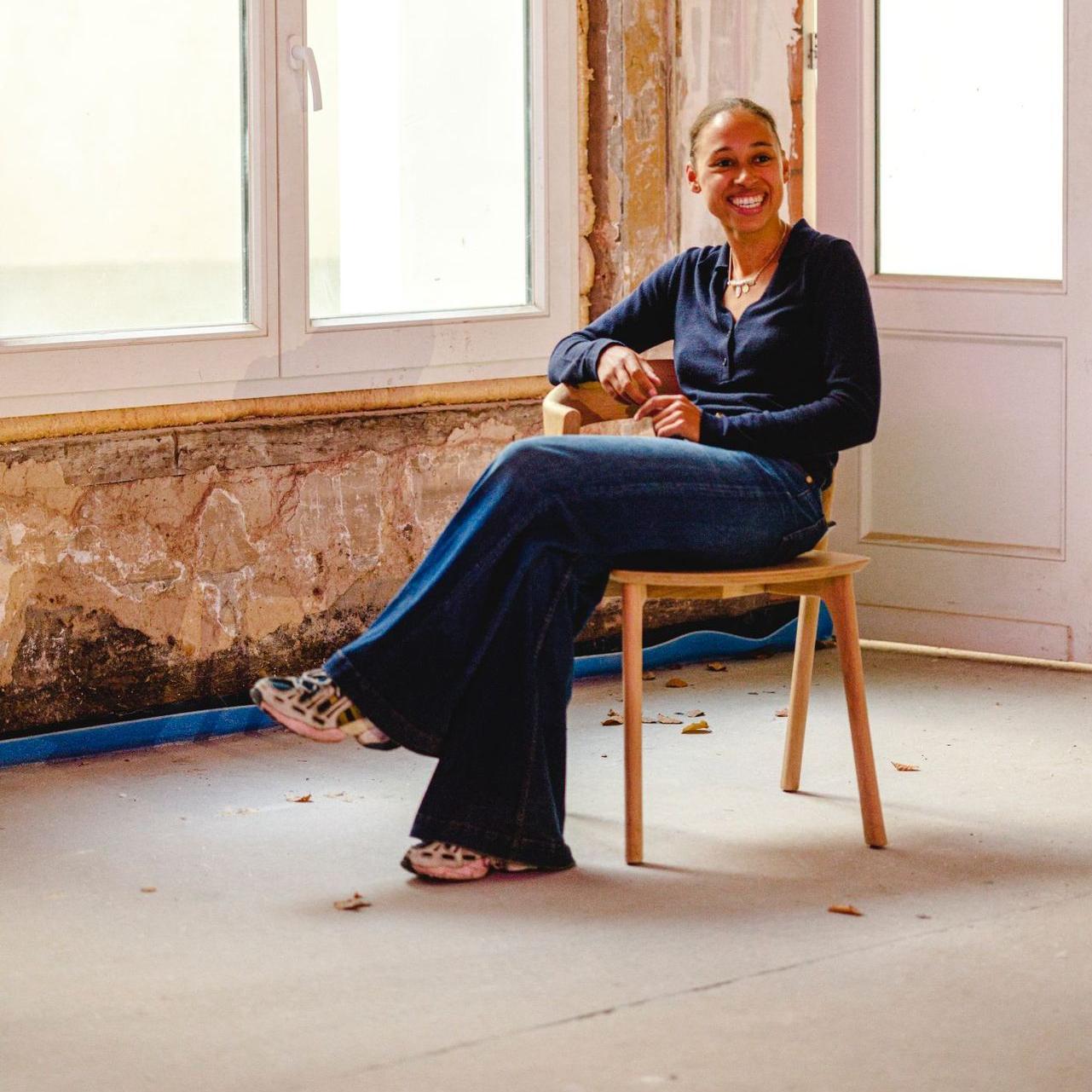
"Art simplifies and addresses social issues
in an easier and accessible way."
- Nina Maat
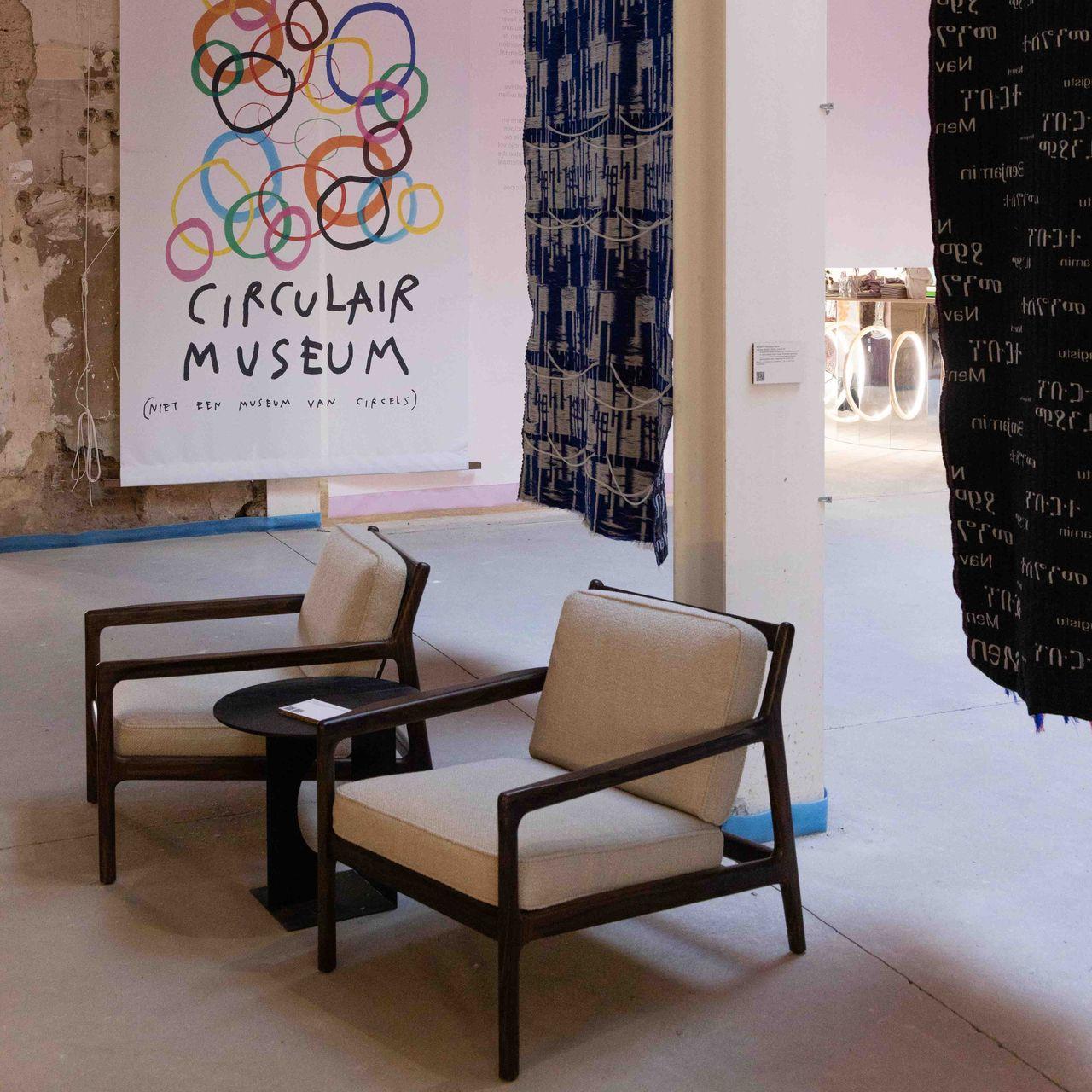
MUCE and Live Light collaborate
With Maat's effort, MUCE was founded, the first pop-up museum of the circular economy. MUCE is situated in the heart of Antwerp, more specifically at the 'Huidevettersstraat'. Instead of paying an entrance fee, you pay with old electronics, for example batteries. At the museum, the circular economy is visualized through art. Maat tells us that art simplifies and addresses social issues in an easier and accessible way. Knowing that ecological issues are social issues as well, art provides a fun way to interact and learn. MUCE is a fully circular environment, using renewable energy and sustainable event materials. Staying true to her message, Maat only worked with circular businesses in the build-up of the concept.
Live Light had the honour to be part of MUCE. But why did Maat choose Live Light? She explains that Live Light is a great example of not needing to sacrifice any luxury in the face of circularity. Live Light provides this luxury in a sustainable and circular way. "I have had so many compliments on my interior in the last month." At MUCE, we are not the only ones being portrayed. A range of artists make circularity tangible along concrete applications from different circular companies.
Picture by Yuri Van der Hoeven
"There is a big social aspect to the circular economy.
It shouldn't only be sheltered workshops who partake in the concept;
every enterprise should be able to participate."
- Nina Maat
Nature's lessons
"The circular economy is one of the most logical solutions to environmental and climate issues," Maat says. Her vision not only refers to keeping materials in the cycle as long as they retain their value, but mainly reducing the amount of materials used. We should look at nature and learn from it. This is the main principle of biomimicry. Look at nature and see how nature works. Learn from it and implement it in your own way of life.
Maat tells us that there is a big social aspect to the circular economy. It shouldn't only be sheltered workshops who partake in the concept; every enterprise should be able to participate. Maat realises that this requires a big mind shift and a different way of living. This mind shift can be achieved through taking small steps. Maat, for example, tries to eliminate taking the plane for a weekend trip and eating mostly plant-based food. She also teaches us an easy lifehack to implement into your day-to-day-life: "Think twice before you buy something." To restrain from impulse buying, you should ask yourself, Do I really need this? and most of the time you realise that you don't really need it. Another way to contribute to a cleaner earth is to buy pre-loved items. "It's sustainable and unique!"
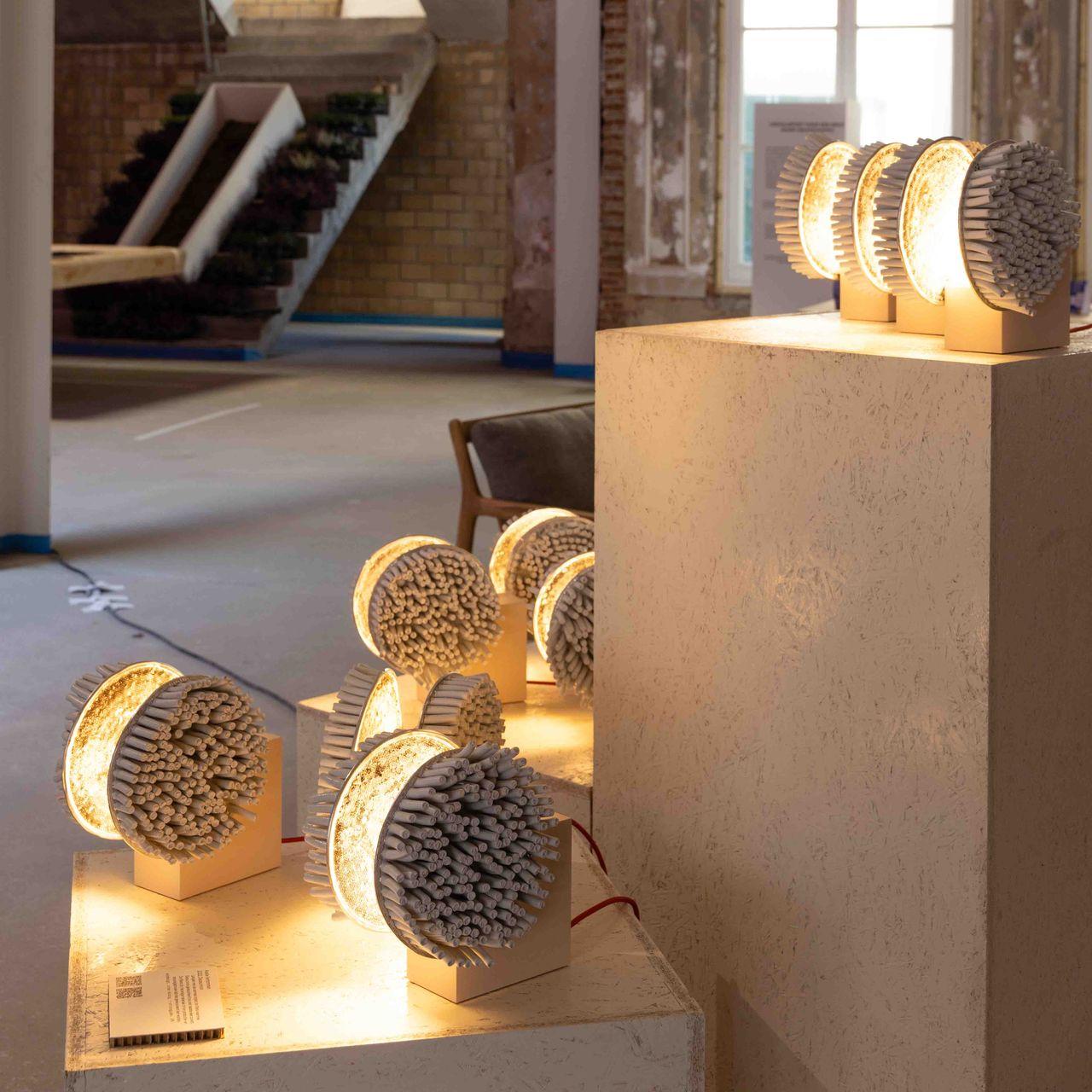
Success is a sum of small efforts
"The beautiful thing is that everyone can do their part within the circular economy.
You don't have to live up to all the faces like reuse, rethink, repair, remanufacture or recycle.
Doing one of these things puts you on the right track and will open more things in the future", Maat says.
The Live Light team had the opportunity to experience the MUCE pop-up museum,
and we recommend visiting this beautiful and sustainable initiative in the heart of Antwerp.
